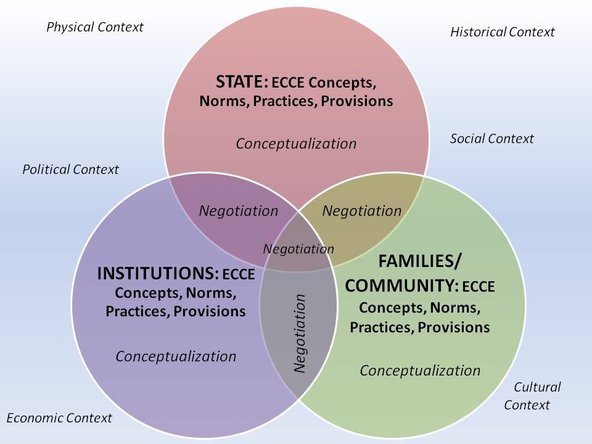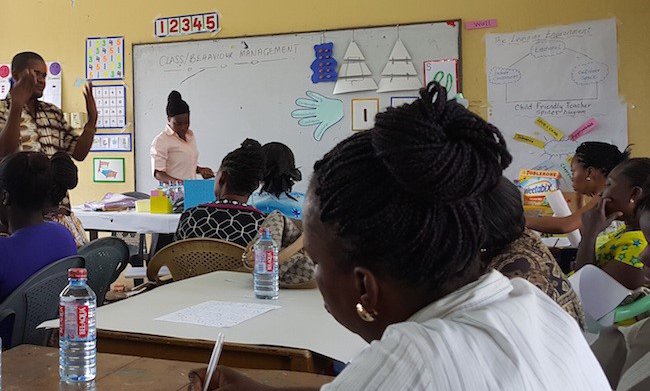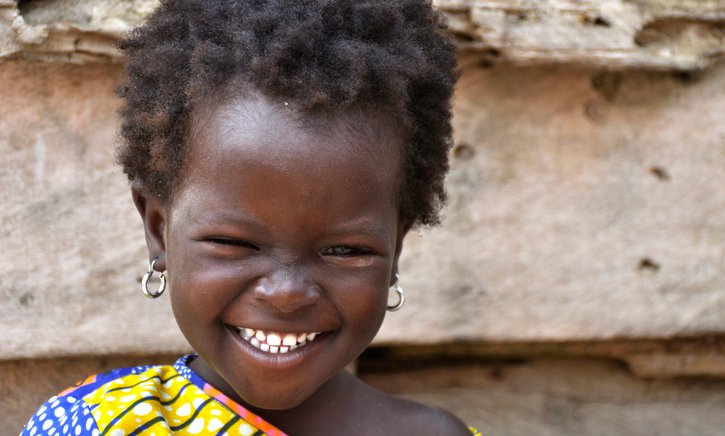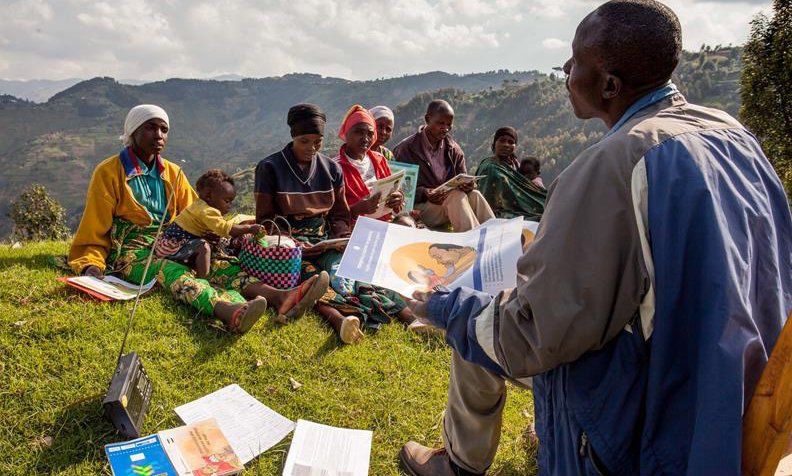Towards responsive models of early childhood care and education in India
by Jyotsna Jha
10 Jun 2018
Improving the quality of ECCE in India
India has a significant child population, with 158 million children between the ages of 0-6 years. The Integrated Child Development Scheme (ICDS), India’s flagship child welfare programme, which includes the provision of early childhood care and education (ECCE), reaches 48% of children of pre-school age. Despite the growth of private and non-government ECCE providers, 20% of children between 3-5 years are not enrolled in formal centres.
Access to quality ECCE varies according to region, caste, ethnicity, religion and economic backgrounds (CBPS 2018). Issues of inadequate infrastructure and space, financing and the regulation of the sector have been identified as particular concerns (Rao & Kaul 2017, CPBS 2018). Despite a policy emphasis on Developmentally Appropriate Practice, the quality of education in ECCE settings also remain a key issue, and many practitioners and teachers are without adequate training in early years learning approaches.
Despite significant research and advocacy for ECCE at global and national levels, policy debates on improving the quality of provision often overlook the fact that notions of ‘quality’ ECCE are largely grounded in models and practices of childcare and education that have been developed outside of local communities. How can institutional forms of ECCE be more responsive to the communities they serve? Our project seeks to bring this question to policy debates on improving the quality of ECCE in India.
Whose models of ECCE?
Several studies on ‘best practices’ and ‘good’ models of ECCE in India illustrate how research and policy are informed by normative notions of early childhood care practices that tend to be drawn from urban, middle-class and upper caste contexts (see CBPS-UNICEF 2017, Kaul et al 2017, Swaminathan 1996). This has produced, for example, normative understandings of both the ‘Indian child’ and their ‘development’, papering over the ways in which children and communities across India are confronted with different histories, experiences and politics of education (Balagopalan 2018, Burman 2001). For example, several scholars note how the failure to recognise differing forms of sociocultural organisation within tribal and disadvantaged communities in India have meant that formal schooling has long failed to cater to the needs and priorities of children (Jha & Jhingran 2005, Nambissan 2010).
There is a need, then, for ECCE research and policy to take the contexts of marginalised communities more centrally into account. Communities themselves have concepts and models of childcare and education which can inform institutional practices. This has the potential to challenge dominant assumptions about how ‘quality’ ECCE is imagined and planned for, both nationally and globally. Responsive ECCE, then, necessitates the recognition that marginalised families are not waiting for ‘development’ or ‘to be developed’; they are already full participants in political modernity.
Towards responsive models of ECCE
Our study seeks to identify how responsive models of ECCE can be developed. Through in-depth ethnographic inquiry, we examine the knowledge and practices of childcare and education within tribal and marginalised communities in two Indian states of Tamil Nadu and Bihar. These are areas which have different histories and contexts of education development.[1]The research focuses on the districts of Gudalur and Katihar, respectively, to understand more fully how ECCE is experienced and negotiated among Scheduled Caste, Scheduled Tribe and minority communities in relation to the political economy of ECCE in these regions.
Seeking to understand the multiple factors that shape community engagements with ECCE, we have developed a framework to understand the interactions between three main fields surrounding child development: the state, institutions and families/community. This will make evident how actors within each field conceptualise notions of ‘child’, ‘childhood’, ‘care’, ‘education’ and ‘development’ (represented in Figure 1 below).

Figure 1: Framework for understanding the interacting fields of child development
The framework allows us to trace the relationships between the state (policies, political economy), institutions of ECCE (public and private), and caregivers (including parents, extended families and the community). The study examines the physical, historical, social, economic, political and cultural contexts through which ECCE is constructed and negotiated. In doing so, we are able to identify the concepts, norms, practices and provisions adopted by each field and how these interact. Analysis across the three fields will identify critical features of responsive models. This will be brought to costed policy simulations to provide directions on how ‘quality’ ECCE can be both imagined and planned for.
We suggest that this framework for thinking about responsive models of ECCE offers the possibility to move beyond ‘culture’ as an explanatory tool for ‘different’ practices of early childhood care and education across the globe. While recognising the heterogeneity of family practices, the framework shows how practices of ECCE are located within – and are shaped by – intersecting relations of the political economy. That is, different practices of ECCE cannot be reduced to ‘culture’ alone. Analysing ECCE in this way enables researchers and policy makers to consider the material and social conditions required to improve the ‘quality’ of ECCE provision which is, at the same time, responsive to the practices and needs of local communities.
Dr Jyotsna Jha is the Director of the Centre for Budget and Policy Studies, India and principal investigator for the project Examining the Contexts, Practices and Costs of Early Childhood Care and Education in India: Responsive Models for Child Development, part of our Early Childhood Development Programme.
Reference List
Balagopalan, S. (2018). Colonial modernity and the ‘child figure’: Reconfiguring the multiplicity in ‘multiple childhoods’. In T. S. Saraswathi, Shailaja Menon and Ankur Madan (Eds.), Childhoods in India: Traditions, trends and transformations. pp 23-43. Oxon, New York: Routledge.
Burman, E. (2001). Beyond the Baby and the Bathwater: Postdualistic Developmental Psychologies for Diverse Childhoods. European Early Childhood Education Research Journal 9:1, 5-22.
CPBS. (2018). Research Studies on Early Childhood Care and Education. Status Report I on Implementation and Gaps of ECCE in India (with special focus on Delhi, Odisha and Telangana).Bangalore:CBPS.
CBPS-UNICEF. (2017). Reviewing the status of education in tribal areas in Maharashtra: A Comprehensive Report. Bangalore:CBPS.
Drèze, J. and Khera, R. (2015). Child Development: How are Indian States Faring. Retrieved from http://www.ideasforindia.in/article.aspx?article_id=1544on 04/06/2017.
Jha, J. and Jhingran, D (2005). Elementary Education for the Poorest and Other Deprived Groups: The Real Challenge of Universalization. Manohar Publishers.
Kaul, V., Bhattacharjea, S., Chaudhary, A. B., Ramanujan, P., Banerji, M., & Nanda, M. (2017). The India Early Childhood Education Impact Study. New Delhi: UNICEF.
Nambissan, G. (2010). M. W. Apple, S.J. Ball & Luis A. Gandin (Eds.) In The Routledge International Handbook of the Sociology of Education
Rao, & Kaul, V. (2017). India’s integrated child development services. Case Report in Child: Care, Health and Development Scheme: Challenges for scaling up. doi:10.1111/cch.12531
Swaminathan, M. (1996). Innovative Child Care Programmes in India. International Journal of Early Years Education. Vol.4(2), pp. 41-56
[1] For instance, while Tamil Nadu has a high child development index (CDI) of 0.863, Bihar has a significantly poorer CDI of 0.296 (Drèze and Khera 2015). Also, Tamil Nadu has a longer history of state childcare provisioning and legislation, while Bihar has had a weaker institutional history of ECCE.


